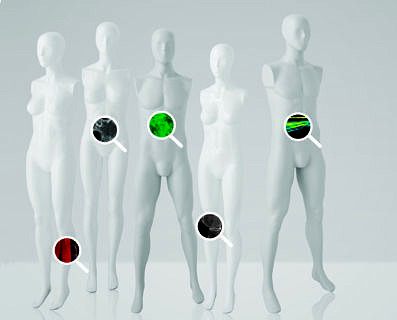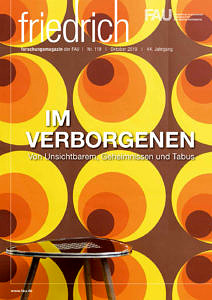Gaining insights into the human body

Our skeleton, organs and every individual atom in our body are hidden beneath our skin. They only become visible using medical imaging, and this, also thanks to scientists at FAU, is becoming increasingly sophisticated.
by Frank Grünberg
The image went around the world and was met with fascination from experts and the general public alike: a picture of a hand where the bones were clearly visible. We are of course talking about the first ever X-ray image. Wilhelm Conrad Röntgen discovered X-rays in 1895. His discovery allowed people to see inside a living human body for the first time. It was a revolutionary step. At the time, if doctors were able to see inside a body, it was rarely good news for patients. Basically, it was only possible if there were gaping wounds – or the patient had already died.
Nowadays, we take it for granted that it is possible to see inside our bodies. Medical imaging allows doctors to see how and where bones are broken, whether tissue is healthy, inflamed or degenerating, or whether and if so where foreign bodies are hidden between organs and layers of tissue. Examinations are becoming less and less invasive. In the 21st century, scientists, including scientists from FAU, are continuing to refine medical imaging techniques, for example taking 3D images of tissue, making tiny blood vessels visible or taking weight-bearing X-ray images.
In this friedrich issue we look at five image medical imaging techniques:
Endomicroscopy: Rapid test for polyps
Computer tomography: weight-bearing scans
Light-sheet microscopy: an underground train system for immune cells
Endomicroscopy: diagnosing tissue without artificial contrast agents
Multi-spectral optoacoustic tomography (MSOT): tracking haemoglobin
About the author
Frank Grünberg studied physics and journalism and most enjoys writing stories which explore the tensions between business, science and technology. He lives and works as a freelance author in Wuppertal.
FAU research magazine friedrich
 This article first appeared in our research magazine friedrich. You can order the print issue (only available in German) free of charge at presse@fau.de.
This article first appeared in our research magazine friedrich. You can order the print issue (only available in German) free of charge at presse@fau.de.